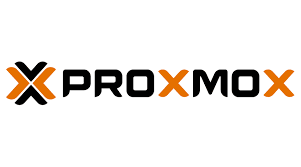Veeam Backup & Replication 12.2: Proxmox VE Support Ushers in a New Era of Open-Source Virtualization

The virtualization world is buzzing with the latest release of Veeam Backup & Replication 12.2, and for a good reason. One of the standout features of this update is the newly added support for Proxmox VE (Virtual Environment), a powerful and rapidly growing open-source virtualization platform. While VMware has long held the crown in enterprise virtualization, Proxmox VE is quickly becoming a mainstream alternative, offering flexibility, scalability, and affordability that appeal to both small and large organisations.
This Veeam 12.2 release, with its Proxmox integration, is a game-changer for your virtual environment management strategy.
Proxmox VE: A Rising Contender in Virtualization
VMware has been the go-to virtualization platform for enterprises for years due to its robust features and widespread industry adoption. However, Proxmox VE has steadily grown in popularity, especially among organisations seeking a cost-effective, open-source solution. Proxmox VE combines KVM (Kernel-based Virtual Machine) and LXC (Linux Containers) into a single management platform, allowing users to easily deploy, manage, and scale virtual machines and containers.
Why the shift toward Proxmox VE? For many, it comes down to the following:
- Cost-effectiveness: Proxmox VE is open-source, eliminating hefty licensing fees associated with other virtualization platforms like VMware.
- Flexibility: The platform supports a range of hypervisors and containers, making it versatile for different workload types.
- Community-driven innovation: Proxmox VE benefits from an active open-source community through rapid updates and feature improvements based on real-world use cases.
- Scalability: Proxmox VE is designed to scale quickly from small lab environments to enterprise-level infrastructures.
With these features in mind, it’s no wonder more IT teams are considering Proxmox VE as an alternative to the traditionally dominant VMware.

Veeam Backup & Replication 12.2: What’s New?
Veeam’s support for Proxmox VE in version 12.2 is a significant milestone for both companies. As Proxmox gains traction, robust, reliable backup solutions have become essential for businesses adopting the platform. Veeam, known for its industry-leading backup and disaster recovery solutions, is the perfect match.
Here are the highlights of Veeam’s new Proxmox VE support:
- Native Proxmox Backup: Veeam 12.2 introduces seamless integration with Proxmox VE, allowing users to back up virtual machines hosted on the platform as easily as VMware or Hyper-V environments. This new capability ensures reliable data protection across many virtual platforms.
- Granular Restore Options: Veeam’s signature granular restore capabilities are now available for Proxmox VE, allowing the quick recovery of individual files, applications, or entire VMs. This granular control is critical in minimizing downtime and ensuring business continuity.
- Advanced Scheduling and Retention Policies: Users can now leverage Veeam’s advanced scheduling features and retention policies to manage backup jobs within Proxmox VE environments. This level of automation and control simplifies the management of backup tasks and ensures long-term data retention in compliance with regulatory requirements.
- Cross-Platform Compatibility: Veeam’s support for Proxmox VE means users can run mixed environments, combining Proxmox with VMware, Hyper-V, or other supported platforms. This flexibility ensures that organisations aren’t locked into a single virtualization vendor and can pivot as their needs evolve.
Why Proxmox VE Is Gaining Mainstream Attention
While VMware remains a dominant player in enterprise virtualization, Proxmox VE’s rapid rise speaks to the shifting dynamics in the virtualization market. Several key factors are driving this shift:
- Open Source and Transparency: As organisations increasingly value transparency and control over their software environments, Proxmox VE’s open-source nature becomes a strong selling point. The ability to audit, modify, and contribute to the platform’s development provides a sense of security and freedom that proprietary solutions like VMware can’t offer.
- Cost Pressure in IT Budgets: Many organisations are reevaluating their IT spending, especially in the current economic climate. With Proxmox VE, businesses can drastically cut virtualization costs without sacrificing performance or features.
- Customization and Flexibility: Proxmox VE allows for deeper customization and integration with various hypervisors and containers. This flexibility is critical for IT teams supporting multiple applications and workloads.
- Vendor Independence: With an increasing demand for vendor-agnostic solutions, businesses seek alternatives to VMware’s proprietary ecosystem. Proxmox VE, with its open standards, allows companies to build more adaptable and resilient infrastructure.
A Powerful Combination for Future-Proofing Virtualization
Including Proxmox VE support in Veeam Backup & Replication 12.2 marks a turning point in the virtualization strategy. As Proxmox VE continues its ascent as a mainstream alternative to VMware, Veeam’s commitment to supporting this open-source platform highlights the growing importance of flexibility and cost-efficiency in today’s IT landscape.
For organisations that have been eyeing Proxmox VE as a VMware alternative or those already using it, Veeam’s robust backup and restore capabilities now provide the security and peace of mind needed to embrace this platform fully. With Veeam and Proxmox VE working hand in hand, businesses can take a significant step toward future-proofing virtualization strategies without breaking the bank.
Want to know more about integrating Veeam Backup & Replication 12.2 with your Proxmox VE environment? Let’s explore how this powerful combination can work for your IT infrastructure. More information can be found at https://www.veeam.com/veeam_backup_12_2_whats_new_wn.pdf




